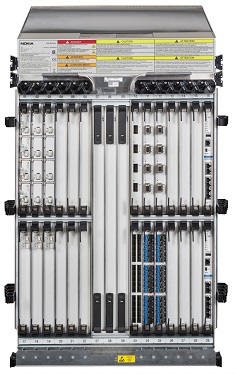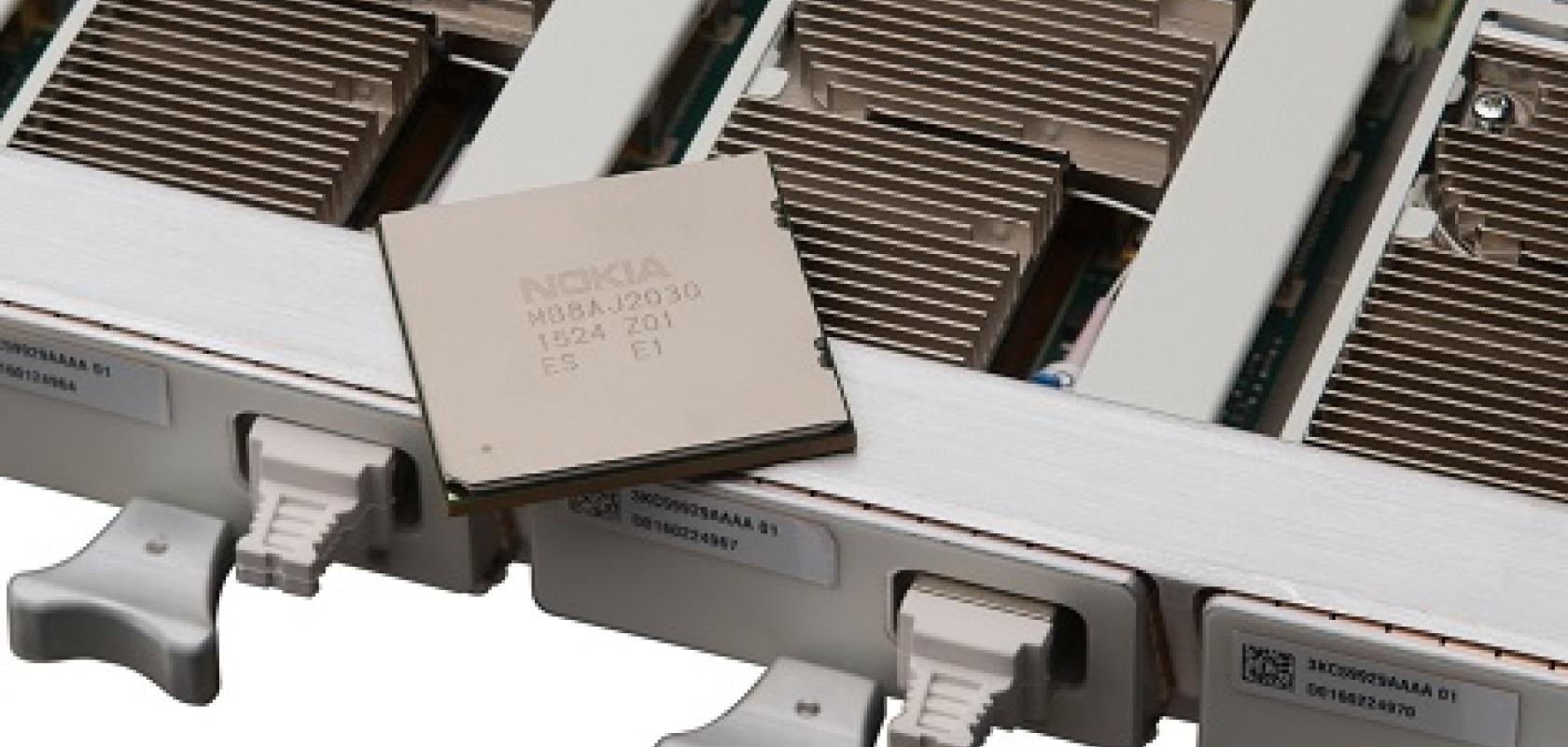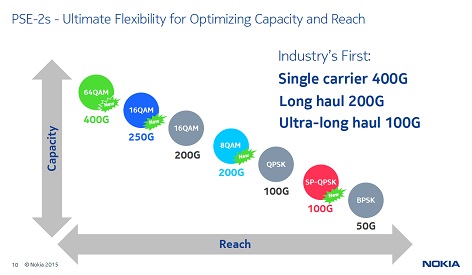The optical division from Nokia has announced technology and product enhancements that will enable service providers to quadruple the amount of capacity transmitted over an optical fibre.
By doubling the capacity of a single wavelength and simultaneously doubling the number of wavelengths transmitted per fibre, Nokia’s flagship 1830 Photonic Services Switch (PSS) platform will scale to support more than 70Tb/s per fibre, the company claims.
The announcement marks the first major product to come out of the optical systems business since Alcatel-Lucent was absorbed by Nokia in January (see Nokia to swallow Alcatel-Lucent in €15.6B deal).
It’s also significant for being such an improvement at a time when capacity gains in optical fibre are starting to plateau, as optical systems bump up against some immutable laws of physics.
Kyle Hollasch, head of optical marketing for Nokia, described the advances as "a generational leap in scale for our customers", which will allow them to usher in a new era of 100G transport services. As 100G becomes the new unit of service currency, operators will need greater capacity and performance from their networks if they are to move that data around cost-effectively.
“We asked what can we do that’s way beyond 100G at the wavelength in order to transport what are now 100G services from our customers,” said Hollasch.
The answer comes in three parts: 500G optical line cards based upon a new generation of digital signal processors (DSP); a new optical platform, the 1830 PSS-24x; and what the company calls ‘Ultra Wideband Wavelength Routing’, which exploits additional wavelengths in the L-band at 1565–1625nm.
Sterling Perrin, senior analyst at Heavy Reading, commented: “Nokia has come out with a powerful combination of innovations aimed at increasing capacity while also adding flexibility and improving efficiency in optical transport networks. More significantly, these are not just technologies, but commercial products that are being rolled out right now. While each of the [silicon] advancements is important on its own, it is really the flexible combination of features – covering 100G to 200G to 400G and from metro to long-haul and ultra-long-haul applications – that makes this announcement so compelling.”
New silicon for ‘super’ coherent
Underpinning these advances is Nokia’s home-grown, next-generation DSP chip, the Photonic Services Engine 2 (PSE-2). The original PSE chip, introduced by Alcatel-Lucent back in 2013, supported 200G of capacity. The PSE2, which comes in two variants, supports up to 500G of capacity per chip and can process two independent carriers simultaneously.
The PSE-2 Super Coherent (PSE-2s) can be programmed with seven modulation formats, giving operators a tremendous amount of flexibility to optimise their systems around bandwidth and distance.
The options start at 50G BPSK and increase in capacity up to what Nokia claims is the industry’s first single-carrier 400G implementation. Aimed at metro and data centre interconnect (DCI) applications, the 400G carrier is based on 64QAM modulation, and can achieve transmission distances of up to 150km.
Other new modulation formats introduced on this chip include 250G 16QAM, 200G 8QAM and a novel 100G scheme called set-partition QPSK (SP-QPSK). (Novel in the sense that it is new to coherent transmission, though it is based on a coding method first described by Gottfried Ungerboeck of IBM in 1982).
The 200G 8QAM format extends the reach of 200G out to 2,000km, making it “universally applicable”, according to Hollasch. “We now have a product that allows carriers to migrate their entire backbone to 200G in both Europe and the US,” he said.
The SP-QPSK modulation scheme boosts 100G transmission from 3,000km out to more than 5,000km before electrical regeneration is required. Although this doesn’t reach transpacific distances, it still “hits a lot of subsea requirements”, according to Hollasch, and will allow operators to use mainstream terrestrial equipment to make a direct connection to submarine networks.
Existing customers will be able to take advantage of the technology in the PSE-2s immediately by buying 1830 PSS 500G DWDM Muxponder cards for their existing platforms. With two line ports and five 100G client ports, the card is ideal for 100G core router interconnect or 100G private line services, according to Nokia.
The muxponder is generally available and shipping now, with 25 customers having placed an order so far, the company says. “We can’t make them fast enough,” said Hollasch.
The second chip, the PSE-2 Compact (PSE-2c), is optimised for 100G applications where density and power are paramount, such as metro access and aggregation networks. With 66 per cent lower power consumption than its predecessor, the new chip will allow Nokia to offer line cards with pluggable optics based on the CFP2-ACO package style in the future.
Both new lines cards will fit into the existing members of Nokia’s 1830 PSS family as well as the newest member, the 1830 PSS-24x, which will become generally available in the next few months.
 The 1830 PSS-24x is a packet-OTN switch, designed to help operators provide switching abilities to match the enhanced line side capacity. Using Nokia’s new Transport Switching Engine (TSE) chipset, the platform can aggregate 10G and 100G packet or OTN clients, preparing them for efficient delivery over 100G wavelengths.
The 1830 PSS-24x is a packet-OTN switch, designed to help operators provide switching abilities to match the enhanced line side capacity. Using Nokia’s new Transport Switching Engine (TSE) chipset, the platform can aggregate 10G and 100G packet or OTN clients, preparing them for efficient delivery over 100G wavelengths.
With 9.6Tb/s of switching capacity in a half-rack shelf, the 1830 PSS-24x has four times the interface density, and half the power consumption in half the space of the current generation of Nokia products. “As far as I know, of the currently announced products, it’s the highest density in the industry,” Hollasch declared.
DE-CIX, a customer of Alcatel-Lucent’s core router, already sees a need for these capabilities. “DE-CIX is seeing an increased need to dynamically interconnect 100G router ports to handle our changing bandwidth needs,” said Daniel Melzer, CTO of DE-CIX. “We are excited to see Nokia introducing the optical innovations of the 1830 PSS 500G Muxponder, which can be reprogrammed quickly to multiple transport wavelength capacity and distance configurations. This unprecedented flexibility on a single optical line card will deliver a highly cost-effective solution that can support both raw capacity at 500G and maximum long-haul distance at 200G.”
Betting on the L-band
The final piece of the announcement is the introduction of Ultra Wideband Wavelength Routing, which extends the capabilities of Nokia's entire 1830 PSS portfolio into the L-band at 1565–1625nm.
The use of the L-band is not new, but this will be the first time that it has been applied to a fully modern reconfigurable optical add-drop multiplexer (ROADM) system, Hollasch says. Nokia plans to introduce complete colourless, directionless, contentionless and flexgrid (CDC-F) capabilities in the extended wavelength range.
There was considerable interest in the L-band about 15 years ago when there wasn’t a clear path beyond 10G, but when 40G and then 100G came along, that interest waned. Part of the reason was that erbium-doped fibre amplifiers (EDFAs) don’t work in the L-band; separate amplifiers are needed to amplify the longer wavelengths.
Nokia is addressing this requirement with a hybrid amplifier that will be part of a new line system that will be introduced later this year. The line system containing the hybrid amplifiers will be available in advance of the optical interfaces and ROADM capabilities, which are expected in 2017.
That makes sense, says Hollasch, since carriers would deploy their line systems first, and fill up the C-band before starting to add L-band wavelengths to the system. This would require carriers to anticipate their need to use the L-band; Nokia thinks this is a bet they will be willing to take because the line system represents less than one per cent of the overall cost of optical transport.
The target market for this kind of capability is the large internet content providers. Since they typically have to lease every mile of fibre on their network, a technology that doubles the capacity on a fibre will prove very attractive, says Hollasch. “There are some key customers for which this is a real need; how widely it will be adopted by the rest of the industry remains to be seen,” he said.



